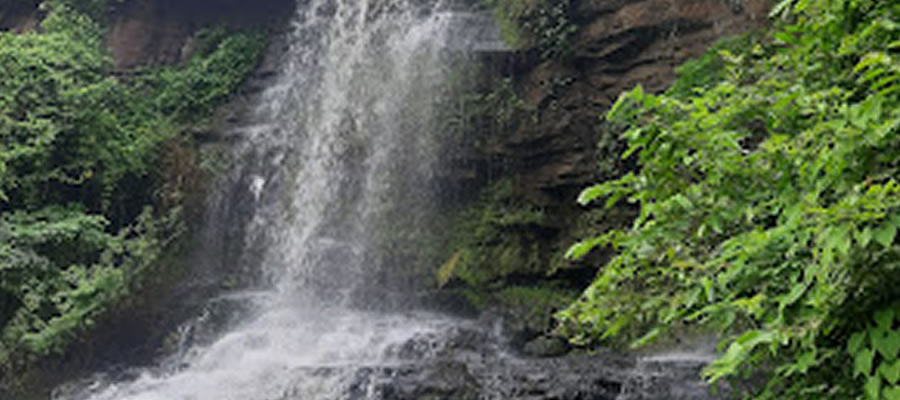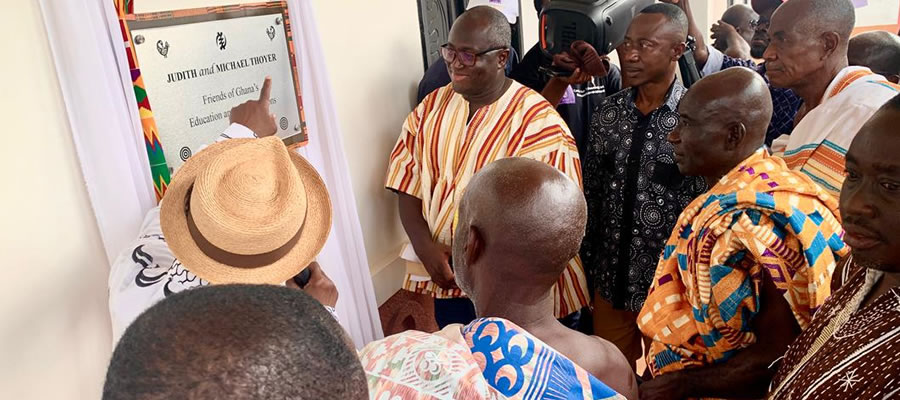

Implication for Development
• The people in the district have rich cultural heritage when tap can enhance development or the district.
• As a matter of urgency, all the communities that have protracted chieftaincy disputes need to be solved particularly Kumawu Township where it has the seat of Paramouncy.
• The traditional authorities should be brought on board if the district is to be developed.
Markets
Almost every settlement in the district has a market of varying sizes in one form or the other, with few having facilities for displaying and selling of wares. Two main daily markets are at Kumawu and Bodomase. These two markets also double as weekly markets, where traders within and outside the district meet to transact business.
Financial Services
Financial services in the district are provided by two main banks namely Kumawuman Rural Bank with its headquarters in Kumawu and Asokore rural bank .The Kumawuman Rural bank also has a branche in Bodomase, while Asokore rural has a branch in Dadease.
Electricity Supply
About 90%, of the settlement/communities have access to electric power from the national grid. The main towns that are connected to the national electrification projects includes Kumawu, the District Capital, Bodomase, Oyoko, Dadease, Asekyerewa, Sekyere and others.
Post and Telecommunication
Most of the settlements in the have access to both post offices and telephone services. Some of telephone services available in the district include, Tigo, MTN, Airtel, Vodafone and GLO.
Spatial Analysis
Settlement System and Linkages
Human settlement exists to perform some functions in the development process. They are essential means for development and nation building. The district is made up of about 33 Settlements/communities/villages with varying population sizes.
In terms of ranking in respect of facilities available, the District capital Kumawu ranks first,
According the 2010 population and Housing census, only four (4) communities (Kumawu, Bodomase, Oyoko and Dadease) can be regarded as Towns with population above 5,000 representing 47.2% of the total population. The remaining 52.8% constitute settlements with population below 5,000.
The communities are linked by types of roads, footpaths and tractor trails. Communities in the north eastern portion of the Sekyere Kumawu are linked mostly by footpaths and tractor trails, even though that portion of the land has greater percentage of land surface in the district. The over concentration of roads and other facilities at Kumawu and Bodomase attract population and investments into the District.
Settlement Hierarchy
Settlements are classified according to the functions they perform in development process. The number and levels of facilities and services available in a settlement determine the function of the settlement thus serving as the basis for determining the hierarchy of settlements. One important tool used in this exercise is the scalogram. A scalogram provides at a glance all the functions or services available in each settlements with their total centrality index based on which a ranking is performed. To carry out this exercise, 20 settlements and 23 functions were selected. After the ranking it was brought to the fore that Kumawu, the district capital emerged first position with total functions of 13. Bodomase and Oyoko followed in second and third positions with total functions of 11 and 9 respectively. Table 1.30 provides more information on the settlement hierarchy of the Sekyere Kumawu District.
Surface Accessibility to Services
Economic and social development can be measured in terms of the ease at which one can move from one destination to another and enjoy a facility or facilities and come back. This is measured by the time one can use to travel (waiting time and traveling time). In the district some locations are more accessible than others in terms of access to health, market, postal services. The acceptable travel time is the maximum time one has to travel to enjoy a particular facility for access to be considered adequate.
The range within which people can access the various facilities/services in a good (stipulated) time using the forms of transport (types of road) available to them has also been indicated below in Table 2.19.
Table 1.33 for example, shows that in the district only those within 2km radius from the location of second cycle school can reach there in 40minutes. Those travelling on the feeder roads who can reach the Senior High School or Vocational Institution within the same stipulated time of 40minutes are only those within a distance of 18km from the location.
It may be interesting to know that someone on tractor trail would prefer walking to taking a vehicle due to the effect of long waiting time of vehicles.
Community Flows
The district is blessed with abundant natural resources in terms of fertile soil which is supportive for production of a variety of crops like cocoa, maize, oil palm, vegetables, rice, plantain and a lot of others. The major economic activities in the district are crop farming, wood carving and agro-processing settlements like Bahankra, Abotanso, Woraso, Banko, Akrofoso and Sekyere for production of maize, rice, yams, plantain and charcoal.
However, due to the lack of market for the produce, produce are sold at cheaper prices and these serve as disincentive for farmers. In south western part of the district, towns like Kumawu, Bodomase and Woraso are noted for the production of vegetables like tomatoes, cabbage, onion and others. Cane products are also produce in commercial quantities at Sekyere and Banko.
The Space Economy
There are 3 service centres in the district, which perform economic, political and social functions to themselves and the peripheral communities. Unfortunately, the core and peripheral communities are not integrated. The core centres cannot adequately serve themselves let alone support the peripheries. The peripheries cannot support the core with the necessary raw materials due to some problems which include inadequate road lengths and poor road conditions and network.
Kumawu and Bodomase can serve the space economy of the district. These two towns are easily accessible but cannot be easily accessed by road from the North-East portion of the district. . The economic sector-Agriculture, manufacturing, transportation and service sectors are not interrogated. The economic and social conditions of Kumawu, Bodomase, Dadease and Oyoko can also support other communities such as Banko, Oyoko, Dadease are relatively better than the rest of the service centres.
Linkage with other District
The district shares boundaries with 4 districts and it is linked economically, socially and spatially with all four districts, Sekyere East, the mother district, Sekyere Central, Asante Akim North and Sekyere Afram Plains District. In terms of economic activities, trade relationship in these four districts is very strong. This is evident by commodities that flow among the districts. Residents within each of the four district commute from one district to the other. In terms of social activities residents in each district enjoy facilities and services like health, education, social centre and other from other districts. Spatially, the road linking the Sekyere East, Sekyere Central is in good condition. These roads are first class.
Poverty Issues in the District
Manifestation of Levels and Locations of Poor and Function Regions 39
Before the creation of the district from the Mother District, Sekyere East and its subsequent split, District Poverty Profiling and Mapping in 2004 indicated that poverty manifests itself in a greater proportion in the district. Based on some criteria of URD, six main poverty pockets were identified. The criteria used to carve the six main pockets of poverty included:
• Access to facilities and services
• Major economic activities
• Potentials available as well as constraints
• Other peculiar characteristics like cultural practices, homogeneity/heterogeneity of areas and others
The six main pockets of poverty included:
Pockets 1:
Key Poverty Problems
• Poor road network and condition
• Poor access to facilities and services
• Large family sizes
• High illiteracy rate
• Unemployment and
• High birth rate
It is the region of hard core poverty due to the factor mentioned above. Bahankra, Ongwam
Pockets 2:
Key Poverty Problems
• Poor road network and condition
• Poor access to facilities and services
• Large family sizes
• High illiteracy rate
• High birth rate
This is almost the middle part of the district covering Bahankra, Ntarentare, Pepease and Asekyerewa
Pockets 3:
Key Poverty Problems:
• Large family sizes
• High illiteracy rate
• Low patronage of produce
• Unemployment
• High birth rate
• Fair access to facilities
The area enjoy fair access to facilities and services
Pockets 4:
Key Poverty Problems
• Unemployment
• Large family sizes
• High illiteracy rate
• Social vices
• High birth rate
The region is located in the south western part of the district covering Oyoko, Dadease and other towns. The region has access to all the facilities and services
Functional Region
From the identified pockets, two locations can be identified as functional regions. These are pocket 5 and 6. The two regions form part of the south-western portion of the district. The regions cover Kumawu, Bodomase and Woraso (pocket 5) Oyoko and Dadease pocket 6. This is the region where economic and social interactions take place in the district. The people in the two regions enjoy all the services available in the district. The regions together form the core region serving the peripheral region (other pockets).
Poverty Profiling/Mapping and Pro-Poor Programming
In the year 2004, the Mother District Sekyere East was tasked to prepare a Poverty Profiling and Mapping document for the district, the document provided an insight into how poverty manifests itself among the different socio-economic groups in the district by then and how poverty was spatially distributed in the district.
Views of stakeholders collated on poverty, its manifestation, causes, constraints and potentials when analyzed helped the Assembly to come out with various district specific pro-poor interventions.
The study revealed that poverty in the district manifests itself when:
• There are low income levels
• There is malnourishment
• There are unhygienic environment
• There is deprivation of education and others
It was also shown that poverty in the district is caused by large family sizes, lack of employment and employable skills, lack of credit facilities, ready market for produce and others.
The composite poverty map also shown that there was uneven distribution of population and facilities in the district. The south-western portion is densely populated and has most of the facilities, whilst the northern and central parts of the district are sparsely populated and deprived of most facilities.
Using tools like the composite poverty map analysis and a scalogram, certain areas that need to be developed to open up the district in order to reduce poverty have been identified.
When one looks at the table above for development nodes and interventions, only pocket 4 and 5 falls within the Sekyere Kumawu District Assembly
Implications for Development
• Bye-laws and regulations on development control in the district should be enforced
• The Assembly in collaboration with the traditional authorities should ensure that all the important settlements like Kumawu, Bodomase, Banko, Woraso, Besoro and other have proper base maps and layouts to control spatial development.
• The road network in the north-eastern and central portions of the Afram Plains should attract much attention of the Assembly and other development partners
• The proposals in the 2004 District Poverty Profiling and Mapping by
Mother District, Sekyere East should be implemented.
Date Created : 11/28/2017 4:15:57 AM











 facebook
facebook
 twitter
twitter
 Youtube
Youtube
 +233 593 831 280
+233 593 831 280 0800 430 430
0800 430 430 GPS: GE-231-4383
GPS: GE-231-4383 info@ghanadistricts.com
info@ghanadistricts.com Box GP1044, Accra, Ghana
Box GP1044, Accra, Ghana